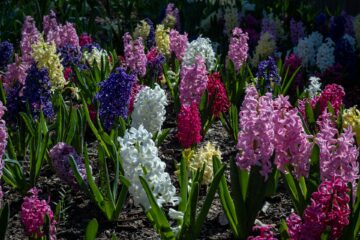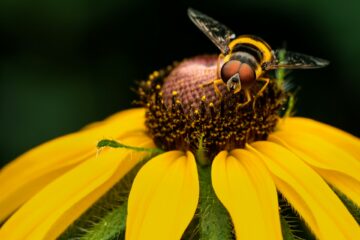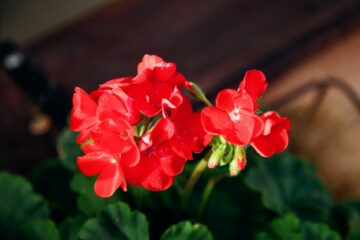If you’ve ever admired a gorgeous rose garden, then you know how rewarding it can be to grow roses. But did you know that roses need special care? They’re delicate plants with specific needs and requirements in order to thrive. To help you get started with successful rose gardening, here are some things I’ve learned over the years:
Roses need a lot of sun.
Roses need a lot of sun. Not just partial sun, but full-on direct sunlight. They will not thrive in shade or under trees, and it is possible that your rose garden could die if you don’t provide enough light for them to grow well.
The best way to ensure that your roses get enough light is by planting them in a location where they will receive at least 4 hours of direct sunlight per day during summer months and 6 hours of direct sunlight per day during winter months (when the days are shorter).
Good air circulation helps roses thrive.
For successful rose gardening your roses will need lots of air to thrive, and they like to be planted in full sun or partial shade. The best spots for roses are those that get at least six hours of sunlight each day. If you can’t plant your rose bush in full sun, try planting it so that it gets at least four hours of direct sunlight each day.
You should also avoid planting your roses in an area where there is poor air circulation. Areas with heavy tree coverage or tall shrubs can cause problems for your plants because they block out the wind necessary for good air circulation around them.
Roses can be very thirsty plants, so it’s important to water them regularly, but not too much.
Roses are one of the most popular garden plants. Their beautiful blooms and fragrant aroma make them a favorite among homeowners. But if you’re new to rose gardening, you may be wondering how often and how much water a rose plant needs.
To help you figure out the best watering schedule for your roses, here are some tips:
- Roses should be watered regularly throughout the growing season–once or twice per week is fine for most varieties. You’ll want to check with your local nursery about their specific watering needs (and any special care requirements).
- Don’t over-water! The soil should feel slightly damp when you dig into it with your finger; if it’s too wet or dry, add more water until it feels just right underfoot before adding any additional fertilizer or mulch around their base.*
Roses are sensitive to wet roots, so drainage is also important.
- Drainage is important for roses.
- Roses need to breathe, and their roots do as well.
- Improving drainage in your rose bed can be as simple as adding some coarse sand or gravel to the soil.
Roses like a slightly acidic soil with lots of organic matter in it.
Who thought you would need to be a chemist to be successful at rose gardening?
If you’re not sure what your soil’s pH is, you can buy a soil test kit at the garden centre. These kits come with instructions on how to use them and will tell you if your soil is acidic or alkaline. If it’s too low (below 6), add lime; if it’s too high (above 7), add sulphur.
Sulphur can be applied as crystals or pellets–the latter may be easier for beginners because they dissolve more quickly in water than do the former. To apply sulfur as crystals:
- Spread 1 pound per 100 square feet of rose bed by hand or broadcast spreader over the entire area being treated with no more than 1/2 inch deep mulch after application; do not apply any other fertilizer at this time since excess nitrogen may burn foliage when combined with sulfuric acid produced by decomposing organic matter such as leaves, grass clippings etc.; wait 4 weeks before applying any additional fertilizer products containing nitrogen since they could burn new growth due to residual acidity left behind after application
Mulch helps keep moisture in the ground around the roots, as well as preventing weeds from growing there.
Mulch is a layer of material that covers the surface of the soil. It helps keep moisture in the ground around your roses’ roots, as well as preventing weeds from growing there. There are many types of mulch you can use:
- Granular organic materials like bark, compost or peat moss. These materials break down over time, so they need to be reapplied every year or two (depending on how fast they break down).
- Grass clippings from your lawn mower after a good trimming session – these provide organic matter for your roses’ beds that will eventually decompose into humus (a soft black substance). This type of mulch should only be applied once per year since it doesn’t hold up well against rain and wind erosion; however, if you live in an area where there aren’t many large trees nearby then this may be an option worth considering! Be sure not to use clippings from other plants such as ivy or poison ivy because these could harm any animals who dig through them while looking for food sources close by.”
Deadhead your roses regularly
Deadheading is the practice of removing faded flowers from a plant. It’s an important part of rose gardening because it encourages new growth and keeps your plants looking tidy, but it also helps prevent disease and pests. You can deadhead roses by hand or use pruners to cut off the old flower heads at their base (just below where they attach to the stem).
The best time to deadhead depends on what kind of rose you have: for hybrid teas and floribundas, remove spent blossoms as soon as they fade; for grandifloras and climbers, wait until after all signs of life have disappeared from within each cluster; never remove dormant buds without first checking their color–if they’re brownish-gray in color rather than green or white-grayish then they’re not yet ready for picking!
If you follow these tips, you’ll be great at rose gardening
If you want to grow roses, there are many different types of roses to choose from. From hybrid teas to miniature roses and more, there’s a flower for every gardener.
Roses are easy to grow and require little maintenance once they’re established in your garden. They also make beautiful gifts when cut fresh from your own garden!
We hope this article has helped you understand what it takes to grow beautiful roses. If we’ve learned anything from our years of experience in the flower business, it’s that there are no shortcuts when it comes to growing beautiful roses–but there are plenty of ways to make the process easier on yourself! By following these tips and tricks, you can make sure that your garden thrives year after year without much effort at all.
Keep on top of your gardening with our free online journal
Our free online tool allows you to organise your ideas and garden plans and help you be as efficient as possible in the garden.
Sign up now

